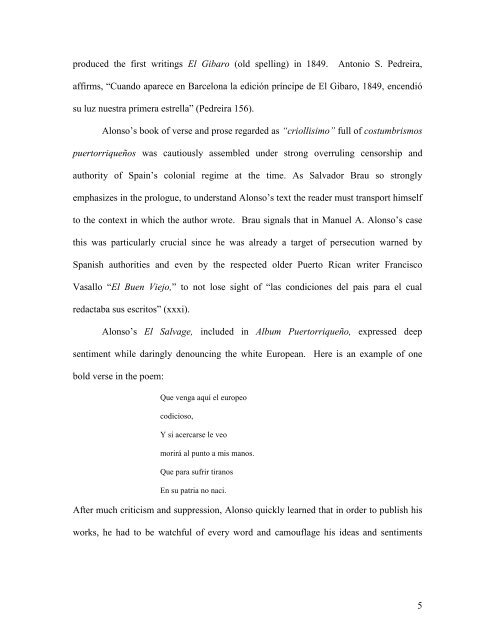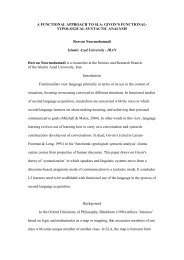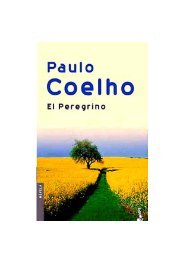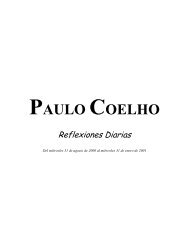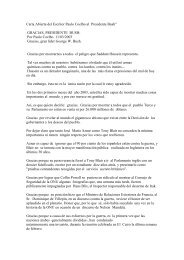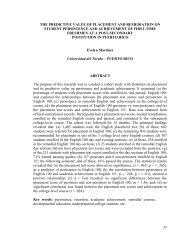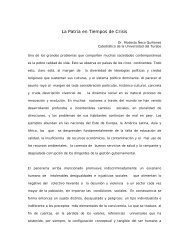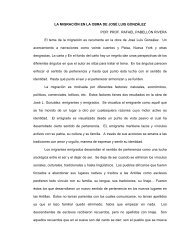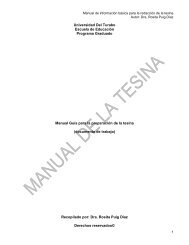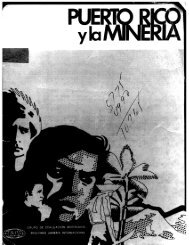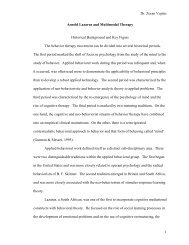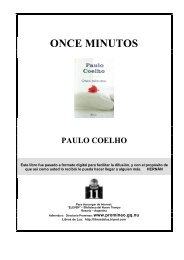Jennet Rodriguez Betancourt
Jennet Rodriguez Betancourt
Jennet Rodriguez Betancourt
Create successful ePaper yourself
Turn your PDF publications into a flip-book with our unique Google optimized e-Paper software.
produced the first writings El Gibaro (old spelling) in 1849. Antonio S. Pedreira,<br />
affirms, “Cuando aparece en Barcelona la edición príncipe de El Gibaro, 1849, encendió<br />
su luz nuestra primera estrella” (Pedreira 156).<br />
Alonso’s book of verse and prose regarded as “criollisimo” full of costumbrismos<br />
puertorriqueños was cautiously assembled under strong overruling censorship and<br />
authority of Spain’s colonial regime at the time. As Salvador Brau so strongly<br />
emphasizes in the prologue, to understand Alonso’s text the reader must transport himself<br />
to the context in which the author wrote. Brau signals that in Manuel A. Alonso’s case<br />
this was particularly crucial since he was already a target of persecution warned by<br />
Spanish authorities and even by the respected older Puerto Rican writer Francisco<br />
Vasallo “El Buen Viejo,” to not lose sight of “las condiciones del pais para el cual<br />
redactaba sus escritos” (xxxi).<br />
Alonso’s El Salvage, included in Album Puertorriqueño, expressed deep<br />
sentiment while daringly denouncing the white European. Here is an example of one<br />
bold verse in the poem:<br />
Que venga aquí el europeo<br />
codicioso,<br />
Y si acercarse le veo<br />
morirá al punto a mis manos.<br />
Que para sufrir tiranos<br />
En su patria no naci.<br />
After much criticism and suppression, Alonso quickly learned that in order to publish his<br />
works, he had to be watchful of every word and camouflage his ideas and sentiments<br />
5


